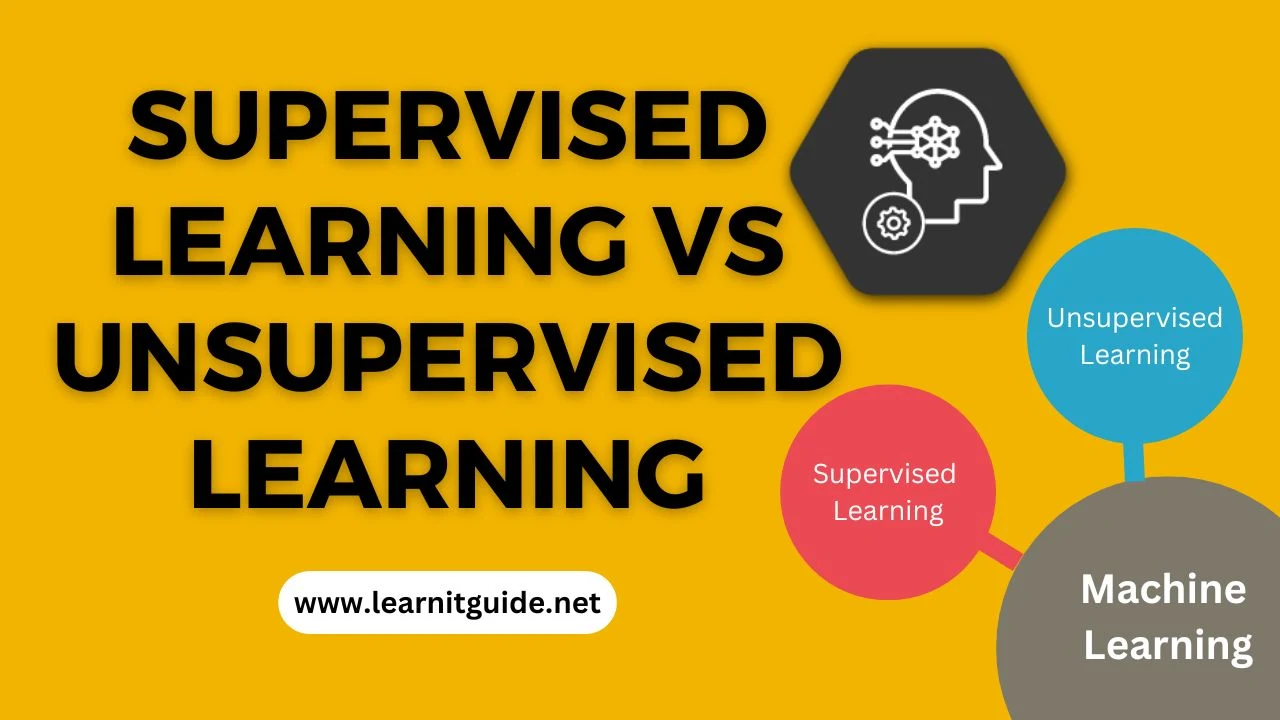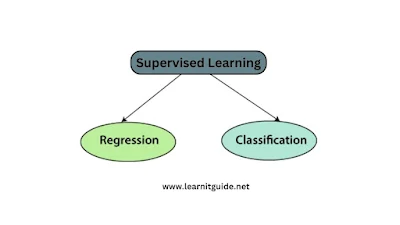This post will help you to understand about Supervised Learning vs Unsupervised Learning.
If you are interested in learning, Request you to go through the below recommended tutorial.
DevOps Full Course Tutorial for Beginners - DevOps Free Training Online
Docker Full Course Tutorial for Beginners - Docker Free Training Online
Kubernetes Full Course Tutorial for Beginners - Kubernetes Free Training Online
Ansible Full Course Tutorial for Beginners - Ansible Free Training Online
Openstack Full Course Tutorial for Beginners - Openstack Free Training Online
Supervised Learning vs Unsupervised Learning
Supervised learning and unsupervised learning are two main categories of machine learning algorithms. Both of these categories are used to find patterns in data and make predictions, but they work in different ways. In this post, we will discuss the key differences between supervised learning and unsupervised learning, their strengths and limitations, and some of the most common use cases for each.
What is Supervised Learning?
Supervised learning is a type of machine learning where the algorithm is trained on a labeled dataset. The labeled dataset includes both input features and the desired output, also known as the target variable. The goal of supervised learning is to learn a function that maps input features to the correct output. This learned function can then be used to make predictions on new, unseen data.
Examples of supervised learning include linear regression, logistic regression, decision trees, random forests, and neural networks. Supervised learning is often used in applications such as classification, regression, and time series forecasting.
What is Unsupervised Learning?
Unsupervised learning, on the other hand, is a type of machine learning where the algorithm is trained on an unlabeled dataset. The goal of unsupervised learning is to find patterns and relationships in the data on its own, without any guidance or supervision. Unsupervised learning algorithms are used for clustering, dimensionality reduction, and anomaly detection.
Examples of unsupervised learning include k-means clustering, hierarchical clustering, principal component analysis (PCA), and t-distributed stochastic neighbor embedding (t-SNE).
Supervised Learning vs Unsupervised Learning
The key difference between supervised learning and unsupervised learning is the presence of labeled data. In supervised learning, the algorithm is trained on a labeled dataset with known inputs and outputs, whereas in unsupervised learning, the algorithm is trained on an unlabeled dataset without any prior knowledge of the output.
Supervised learning algorithms require more data preparation, including the labeling of data, than unsupervised learning algorithms. In addition, supervised learning algorithms generally require more computational resources, as the complexity of the model increases.
However, supervised learning algorithms typically have a higher accuracy and are better suited for making predictions on new data. In contrast, unsupervised learning algorithms are better suited for finding patterns in large datasets and can be used for exploratory data analysis.
Strengths and Limitations of Supervised Learning
Supervised learning has several strengths, including its ability to learn complex patterns and make accurate predictions on new data. This makes it a popular choice for many applications, such as image recognition, speech recognition, and natural language processing.
However, supervised learning also has some limitations. One of the main limitations is the need for labeled data, which can be time-consuming and expensive to obtain. In addition, supervised learning algorithms can overfit the training data, meaning that the model is too complex and fails to generalize to new, unseen data.
Strengths and Limitations of Unsupervised Learning
Unsupervised learning also has several strengths, including its ability to identify patterns and relationships in large datasets. Unsupervised learning algorithms are often used for exploratory data analysis, where the goal is to gain insight into the data and identify hidden patterns that can be used to inform decision-making.
However, unsupervised learning also has some limitations. One of the main limitations is the difficulty in evaluating the performance of unsupervised learning algorithms. Since there is no objective function to optimize, it can be difficult to determine whether an unsupervised learning algorithm has learned anything meaningful.
Applications of Supervised Learning and Unsupervised Learning
Supervised learning and unsupervised learning algorithms have many different applications. Some common applications of supervised learning include:
Image recognition:
Supervised learning algorithms can be used to classify images based on their contents, such as identifying the presence of certain objects or animals
Speech recognition:
Supervised learning algorithms can be used to transcribe speech into text, which can be used for a variety of applications such as virtual assistants, automatic captioning, and voice search.
Natural language processing: Supervised learning algorithms can be used for tasks such as sentiment analysis, text classification, and language translation.
Some common applications of unsupervised learning include:
Clustering:
Unsupervised learning algorithms can be used to group similar items together, such as grouping customers based on their purchase history or grouping news articles based on their content.
Anomaly detection: Unsupervised learning algorithms can be used to identify unusual patterns or outliers in data, such as identifying fraudulent credit card transactions or detecting anomalies in network traffic.
Dimensionality reduction:
Unsupervised learning algorithms can be used to reduce the dimensionality of a dataset while retaining as much of the original information as possible. This can be useful for visualization, data compression, and feature selection.
Conclusion
In conclusion, supervised learning and unsupervised learning are two main categories of machine learning algorithms. Supervised learning is used for making predictions on new, unseen data, while unsupervised learning is used for finding patterns in large datasets. Both supervised learning and unsupervised learning have their strengths and limitations and are used for different applications. Understanding the differences between these two types of machine learning is important for choosing the right algorithm for a particular task.
That’s it for this post, Hope you have got an idea about Supervised Learning vs Unsupervised Learning.









0 Comments